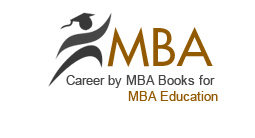According to the Webster, “Reading is thinking under the stimulus of the printed page.” Or “Reading is a psycho-linguistic guessing game.”
When you read, you read the lines, read between the lines and also read beyond the lines. So reading is nothing but a decoding process.
Purpose of reading:
We read many things in our day-to-day lives. Let us name a few of them:
Newspapers and magazines
Advertisements, leaflets, pamphlets
Textbooks, novels, short-stories
Letters, telegrams
Recipes, puzzles, menus
Articles, reports, legal documents
Dictionaries, telephone directories
Cartoons, comic strips
Time-tables, maps, statistical graphs and diagrams etc.
We have just listed the different texts that we normally read witch certain definite purpose in mind. They are read either for personal interest, for pleasure, to acquire information or to participate in society. For you, as students, the purpose of reading is emphasized on either for interest or for pleasure and reading to acquire information and knowledge. Reading for interest of pleasure is usually fulfilled through reading fiction, while reading to learn is associated with informative articles. Reading for information may be both internal and external. When you read for necessary background information about what is going on within the company where you work, or within your group it is called reading for internal information. Reading for the information of what is going on in your field, but outside your own company is called External information.
You may need to do something concrete in the not too distant future after you have read whatever it is you are reading this is Action Reading. Professional reading is done when you need to continue learning and studying so that you develop your own thinking and skills. But you should bear in mind that the text itself is not written strictly for any one purpose. For instance, any biography or autobiography will be read as personal interest to understand the life story of an individual. The same maybe read by a research scholar for his research purpose. People’s interest in reading is so varied, that any text could meet any purpose.
The chapter has been taken from Business Communication of SMU MBA MB0023. It is the next chapter of how to listen customer complaints.
When you read, you read the lines, read between the lines and also read beyond the lines. So reading is nothing but a decoding process.
Purpose of reading:
We read many things in our day-to-day lives. Let us name a few of them:
Newspapers and magazines
Advertisements, leaflets, pamphlets
Textbooks, novels, short-stories
Letters, telegrams
Recipes, puzzles, menus
Articles, reports, legal documents
Dictionaries, telephone directories
Cartoons, comic strips
Time-tables, maps, statistical graphs and diagrams etc.
We have just listed the different texts that we normally read witch certain definite purpose in mind. They are read either for personal interest, for pleasure, to acquire information or to participate in society. For you, as students, the purpose of reading is emphasized on either for interest or for pleasure and reading to acquire information and knowledge. Reading for interest of pleasure is usually fulfilled through reading fiction, while reading to learn is associated with informative articles. Reading for information may be both internal and external. When you read for necessary background information about what is going on within the company where you work, or within your group it is called reading for internal information. Reading for the information of what is going on in your field, but outside your own company is called External information.
You may need to do something concrete in the not too distant future after you have read whatever it is you are reading this is Action Reading. Professional reading is done when you need to continue learning and studying so that you develop your own thinking and skills. But you should bear in mind that the text itself is not written strictly for any one purpose. For instance, any biography or autobiography will be read as personal interest to understand the life story of an individual. The same maybe read by a research scholar for his research purpose. People’s interest in reading is so varied, that any text could meet any purpose.
The chapter has been taken from Business Communication of SMU MBA MB0023. It is the next chapter of how to listen customer complaints.
